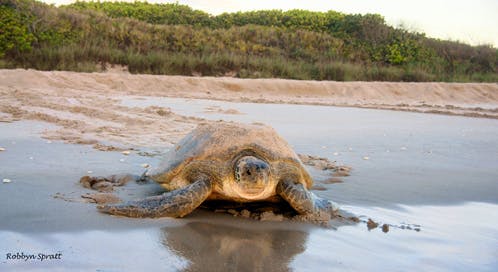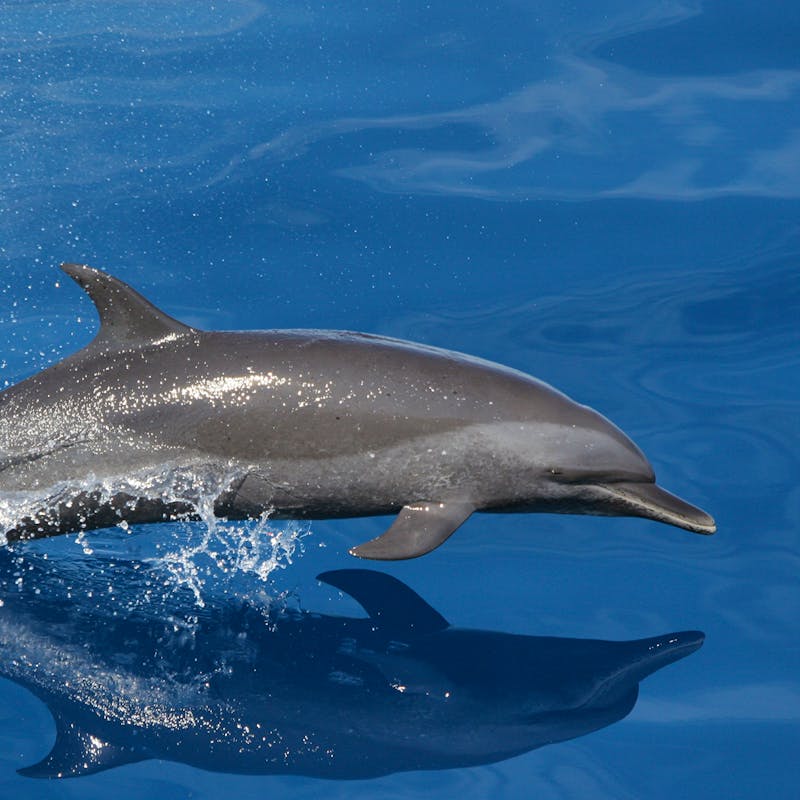There is plenty of good news for the loggerhead sea turtle this summer!
This month, the federal government designated critical habitat , including 84 percent of all known nesting areas, and protections for large areas of ocean habitat, for the loggerhead sea turtles found in the Northwest Atlantic.
Critical habitat is an area determined vital to the survival and recovery of an endangered species. In such an area, any project requiring a federal permit—like offshore energy development, beach replenishment, or commercial fishing in U.S. waters—have to be evaluated before they begin, to ensure that they won’t harm the species concerned, or destroy or adversely modify critical habitat. The National Marine Fisheries Service and the Fish and Wildlife Service together designated over 685 miles of nesting beach and 300,000 square miles of open ocean for the loggerhead. That’s the largest critical habitat dedication in history!
And it couldn’t come at a better time. From Mississippi on the Gulf of Mexico to North Carolina on the East Coast, female loggerheads are swimming ashore to lay their eggs. Only one in 1,000 to one in 10,000 hatchlings will survive to have offspring of their own. Loggerhead sea turtles don’t reach sexual maturity until they’re at least three decades old. Amazingly, most female sea turtles return to the same beach where they were born year after year to lay their eggs, which makes this critical habitat designation even more important.
their eggs. Only one in 1,000 to one in 10,000 hatchlings will survive to have offspring of their own. Loggerhead sea turtles don’t reach sexual maturity until they’re at least three decades old. Amazingly, most female sea turtles return to the same beach where they were born year after year to lay their eggs, which makes this critical habitat designation even more important.
Unfortunately, we still have a long way to go in helping loggerheads and other sea turtle species recover. Accidentally ingesting trash is a serious problem for these creatures, which often mistake bags and other plastic materials for food such as jellyfish. Defenders is working hard to increase protection from entanglement in fishing nets for sea turtles: turtle excluder devices (TEDs), which allow turtles to escape nets, are mandatory in some areas, but they aren’t required off the coast of Louisiana. Ghost nets, forgotten nets left behind in the ocean by fishermen, cause numerous sea turtle deaths each year, while other fishing gear types such as longlines, gillnets, and dredges are also responsible for killing loggerheads. Boat strikes kill and injure turtles at sea and near beaches. In the longer term, climate change and sea level rise may reduce the beach areas available for nesting and cause an imbalance between the numbers of male and female hatchlings; turtles, like many other reptiles, tend to hatch more females in warmer sands and more males in cooler sands.
 On shore, seawalls and other armoring prevent sea turtles from nesting. Lights near the beach can disorient mother turtles and their hatchlings and make them crawl further inland and even off the beach, where they are killed by predators or vehicles, instead of back to the sea. Trash left on the beach attracts predators like raccoons, foxes, coyotes and ants that can destroy entire nests and kill hatchlings. By cleaning up our oceans, improving fishing practices, and reducing coastal armoring and light pollution, we can make a real difference for these incredible and ancient creatures.
On shore, seawalls and other armoring prevent sea turtles from nesting. Lights near the beach can disorient mother turtles and their hatchlings and make them crawl further inland and even off the beach, where they are killed by predators or vehicles, instead of back to the sea. Trash left on the beach attracts predators like raccoons, foxes, coyotes and ants that can destroy entire nests and kill hatchlings. By cleaning up our oceans, improving fishing practices, and reducing coastal armoring and light pollution, we can make a real difference for these incredible and ancient creatures.
The new critical habitat designation is a great step forward for loggerhead sea turtles. Protecting the lands and waters our nation’s endangered species need is vital to their recovery. We are hopeful that the decision our government made this July will help ensure the return of sea turtles to their beaches for generations to come.
Haley McKey is a Communications Associate at Defenders of Wildlife




